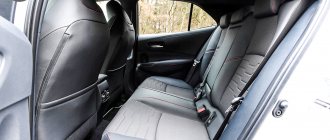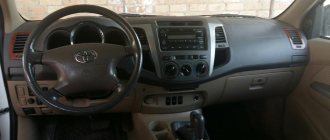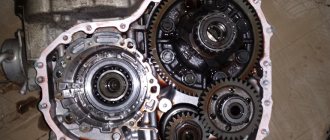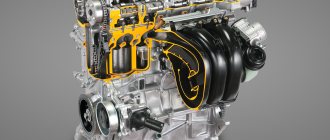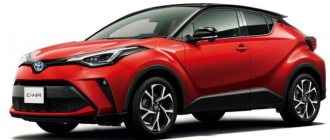What is a CVT transmission, and how does it differ from a traditional transmission? This question may be of interest to both existing car owners with this type of torque transmission and future ones. This type of gearbox implies the absence of fixed gear ratios. This gives a smooth ride and also allows you to use the engine in optimal modes. Another name for such a box is a variator. Next, we will consider the pros and cons of the CVT gearbox, the nuances of its use, as well as reviews from motorists who already own cars with a continuously variable transmission.
Definition
The abbreviation CVT (Continuously Variable Transmission) translates as “continuously variable transmission”. That is, its design implies the possibility of smoothly changing the transmission coefficient between the driving and driven pulleys. In fact, this means that the CVT gearbox has many gear ratios within a certain range (the boundaries of the ranges set the minimum and maximum diameters of the pulleys). Operating a CVT is in many ways similar to using an automatic transmission. You can read about their differences separately.
Today there are the following types of variators:
CVT operation
- frontal;
- conical;
- ball;
- multi-disc;
- end;
- wave;
- disc ball;
- V-belt.
The CVT box (variator) is used not only as a transmission for passenger cars, but also for other vehicles - for example, scooters, snowmobiles, ATVs, and so on.
The most common type of CVT gearbox is a friction V-belt variator. This is due to the relative simplicity and reliability of its design, as well as the convenience and possibility of use in automobile transmissions. Today, the vast majority of automakers producing cars with a CVT gearbox use V-belt variators (the exception is some Nissan models with a toroidal-type CVT gearbox). Next, let's look at the design and operating principle of a V-belt variator.
Operation of the CVT box
The V-belt variator consists of two main parts:
- Trapezoidal timing belt. Some automakers use a metal chain or a belt made of metal plates instead.
- Two pulleys formed by cones with their points pointing towards each other.
The closer the coaxial cones are to each other, the diameter of the circle that the belt describes decreases or increases. The parts listed are CVT actuators. And everything is controlled electronically based on information coming from numerous sensors.
The principle of operation of the variator
Continuously variable CVT transmission device
So, if the diameter of the driving pulley is maximum (its cones will be located as close to each other as possible), and the driven pulley is minimal (its cones will diverge as much as possible), then this means that the highest gear is engaged (corresponding to the 4th or 5th transmission in a traditional transmission). And vice versa, if the diameter of the driven pulley is minimal (its cones will diverge), and the diameter of the driven pulley is maximum (its cones will close), then this corresponds to the “lowest gear” (first in a traditional transmission).
To drive in reverse, the variator uses additional solutions, usually a planetary gearbox, since the traditional approach cannot be used in this case.
Due to the design features of the design, the variator can only be used on relatively small machines (with an engine power of up to 220 hp). This is due to the large forces that the belt experiences during operation. The process of operating a car with a CVT transmission imposes some restrictions on the driver. Thus, you cannot suddenly start from a standstill, drive for a long time at maximum or minimum speed, tow a trailer, or drive off-road.
Pros and cons of CVT boxes
Like any technical device, CVTs have their advantages and disadvantages. But in fairness, it must be taken into account that currently automakers are constantly improving this transmission, so over time the picture will probably change, and CVTs will have fewer disadvantages. However, today the CVT gearbox has the following pros and cons:
| Advantages | Flaws |
| The variator ensures a smooth acceleration without jerks characteristic of a manual transmission or automatic transmission. | Today the CVT is installed on cars with engine power up to 220 hp. This is due to the fact that very powerful motors put excessive stress on the variator drive belt (chain). |
| Higher efficiency. Thanks to this, fuel is saved, and engine power is transferred to the actuators faster. | The variator is very sensitive to the quality of transmission oil. As a rule, it is necessary to buy only original high-quality oils, which are much more expensive than their budget counterparts. In addition, the oil must be changed more often than in a traditional transmission (approximately every 30 thousand kilometers). |
| Significant fuel savings. It is the result of high efficiency and a smooth increase in engine speed and speed (in a traditional transmission, significant overshoot occurs during gear changes). | The complexity of the variator device (the presence of “smart” electronics and a large number of sensors) leads to the fact that at the slightest breakdown of one of the many components, the variator will be automatically switched to emergency mode or disabled (forced or emergency). |
| Highly environmentally friendly, which results from lower fuel consumption. This means that cars equipped with a CVT meet modern high European environmental requirements. | Difficulty of repair. Often, even minor problems with the operation or repair of a variator can lead to a situation where it is difficult to find a workshop and specialists to repair this unit (this is especially true for small towns and villages). And the cost of repairing a CVT is much higher than traditional manual or automatic transmissions. |
| The electronics that control the variator always select the optimal operating mode. That is, the transmission always operates in the most gentle mode. Accordingly, this has a positive effect on the wear and service life of the unit. | A car with a CVT cannot tow a trailer or other vehicle. |
A car equipped with a CVT transmission cannot be used to tow a trailer or other vehicle. Also, you cannot tow the car itself if its engine is turned off. The exception is if you hang the drive axle on a tow truck.
Possible operational problems
In practice, owners of cars equipped with a CVT transmission face three main problems.
- Wear of cone bearings .
The reason for this phenomenon is trivial - wear products (metal shavings) or debris get onto the working surfaces. The car owner will be told about the problem by the sound of a hum coming from the variator. This can happen at different mileages - from 40 to 150 thousand kilometers. According to statistics, the Nissan Qashqai is very guilty of this. To avoid such a problem, it is necessary to regularly change the transmission oil (in accordance with the recommendations of most automakers, this should be done every 30...50 thousand kilometers). Reducing pump and valve - Failure of the oil pump pressure reducing valve . This will be indicated to you by jerking and twitching of the car both during starting and braking, and during calm, even driving. The cause of the breakdown will most likely lie in the same wear products. Due to their appearance, the valve jams in intermediate positions. Consequently, the pressure in the system begins to jump, the diameters of the drive and driven pulleys become out of sync, and because of this, the belt begins to slip. During repairs, the oil and belt are usually changed, and the pulleys are ground. Prevention of malfunction is the same - change the transmission oil and filter on time, and also use high-quality oils. Remember that CVT type transmission oil must be filled into the variator (it provides the necessary viscosity and “stickiness”). CVT oil is distinguished by ensuring stable operation of the “wet” clutch. In addition, it is more sticky, which ensures the necessary adhesion between the pulleys and the drive belt.
- Problems with operating temperature . The fact is that the variator is very sensitive to the range of operating temperatures, in particular to overheating. A temperature sensor is responsible for this, which, if a critical value is exceeded, switches the variator to emergency mode (sets the belt to the middle position on both pulleys). For forced cooling of the variator, an additional radiator is often used. To avoid overheating the variator, try not to drive at maximum or minimum speed for a long time . Also, do not forget to clean the CVT cooling radiator (if your car has one).
conclusions
X-Tronic is quite comfortable to drive, provides sufficient dynamics and modest fuel consumption. With proper care and a calm driving style, the variator can serve up to 150,000 km.
CVT is a kind of gearbox, you need to get used to it. In addition, the transmission may not behave very confidently in icy conditions, and when climbing uphill, slipping, or dynamic driving, it overheats, which can lead to failure of the electronics. The CVT gearbox is demanding on oil quality, so it is quite expensive to maintain.
Soon we will prepare a material in which we will definitely consider the issue of overheating of this transmission, whether it is possible to smooth out this negative point and how to properly change the oil in this transmission so that you enjoy driving your car and spend less time on repairing this transmission.
edit this post
Additional information about the variator
Many experts believe that the CVT gearbox (variator) is the most advanced type of transmission today. Therefore, there are all the prerequisites for the CVT to gradually displace the automatic transmission, just as the latter confidently displaces the manual transmission over time. However, if you decide to buy a car equipped with a CVT, then you need to remember the following important facts:
- the variator is not intended for an aggressive driving style (sharp acceleration and deceleration);
- In a car equipped with a variator, it is strictly not recommended to drive for a long time at extremely low and extremely high speeds (this leads to significant wear of the unit);
- the variator belt is afraid of significant shock loads, so it is recommended to drive only on a flat surface, avoiding country roads and off-road conditions;
- In a variator, it is imperative to change the transmission oil in a timely manner (and use only high-quality original oil).
Before purchasing a car with a CVT gearbox, you need to be prepared for its operating conditions. It will cost you more, but it is worth the pleasure and comfort that the CVT provides. Thousands of motorists today use a CVT transmission, and their number is only growing.
Subaru Outback
This car has a large capacity and increased cross-country ability, has all-wheel drive, so it is often purchased by fans of off-road driving. Let's find out whether the variator copes with this task.
Boris, 47 years old
In principle, I’m not a fan of rallying and off-roading, but going fishing with friends is okay. That is why I chose a car that is suitable for both the city and the country road. I had my doubts about the variator, after all, electronics are electronics, but since I don’t go out of town very often, I decided to make a choice in favor of comfort in everyday life.
In the city, the transmission performs excellently; personally, I’m happy with everything. When I go fishing I don’t go into mud much, so everything was great too. But last weekend, my friend’s car broke down, and he had to be towed for several kilometers, after which the transmission began to be somewhat noisy and not work so smoothly. I don’t know what happened, but I probably overloaded her with towing. It's a shame, because the car is completely new, only 50 thousand with a little mileage. I have already signed up for diagnostics and will wait for the verdict. But for out-of-town trips I will now take another car, a manual one, of course.
Dmitry, 32 years old
For me, a car is a means of transportation. If I need to get to a certain point, I will go there regardless of how good the road is or whether there is one at all. That's why Outback and all-wheel drive. I didn’t really want a CVT, but an option turned up with a mileage of only 10 thousand at a very reasonable price.
First impressions of the Lineartronic CVT are not bad. The dynamics are what you need, the shifts are smooth, I also tried my car off-road. Yes, there were a couple of difficult moments where I could have handled it faster with a manual driver, but the fact that I got out and didn’t get stuck anywhere is a plus.
But very soon it turned out that the CVT is not suitable for people like me. This box needs a calmer driver who doesn’t get into the mud and doesn’t gallop through fields and meadows. To be honest, I expected that the box would travel at least 150 thousand, but as soon as the car crossed the threshold of the first hundred thousand, the dynamics disappeared. The car crawled like a loaded barge. I went to the service center and it turned out that the torque converter was finished. I'll change it, sell this car and buy a mechanic. Apparently this is a death sentence; my other boxes don’t last long.
Reviews about CVT gearbox
Finally, we have collected for you real reviews from car owners whose cars are equipped with a CVT. We present them to your attention so that you have the clearest possible picture of the appropriateness of your choice.
| Positive reviews | Negative reviews |
| You need to get used to the variator. I had the subjective impression that as soon as you let go of the gas, the car stops much faster than with an automatic transmission (most likely this is because engine braking occurs). This was unusual for me, I like to drive to a traffic light. And on the plus side, the dynamics on the 1.5 engine are amazing (not compared to the Supra, but compared to regular cars with 1.5) and fuel consumption is low. | Everyone who praises the CVT, no one can sanely explain why it is better than the modern, also smooth 6-7-speed real hydromechanics, i.e. the answer is simple: nothing, even worse (written above in the article). It’s just that these people bought a CVT not because it is better than an automatic, but because the car they decided to buy did not come with a real automatic. |
| A CVT is more economical than an automatic (I compare it not with a Selick but with any other car with a 1.3 engine | The CVT does not inspire hope. An interesting development, of course. But, given that the entire global auto industry is moving away from improving the reliability of modern units, you can’t expect anything from variable speed drives (as well as from robots). Unless we switch to a consumer attitude towards a car: I bought it, drove it for 2 years under warranty, drained it, bought a new one. Which is exactly what they are leading us to. |
| Pros - faster and more confident acceleration compared to automatics and manuals (unless you are a master of sports in auto racing with a manual). Economical (Fit-5.5 l, Integra-7 l, both on the highway) | Why do you need a CVT when a “classic” automatic was invented long ago - smooth and super reliable? Only one option arises - to reduce reliability and make money on the sale of spare parts. And so, like, 100 thousand. The car has passed - that’s it, it’s time to go to the trash heap. |
| Last winter I drove a Civic with a CVT and had no problems on ice. The CVT is really more economical and dynamic than the automatic. The main thing is that you get it in good condition. Well, a little more expensive service is the price to pay for driving pleasure. | In short, CVT = hemorrhoids, a marketing cartoon for disposable cars. |
| Seventh year on the CVT - excellent flight! | The old machine gun is as reliable as an AK47, nafik these variks |
As you can see, most people who have tried driving a CVT at least once, if possible, do not refuse this pleasure further. However, it is up to you to draw your own conclusions.
Results
The variator, although more complex and expensive to maintain, is still by far the best transmission for cars with an internal combustion engine. And over time, the price of cars equipped with it will only decrease, and the reliability of such a system will increase. Therefore, the described restrictions will be removed. But today, do not forget about them, and use the car in accordance with the manufacturer’s recommendations, and then the SVT box will serve as faithfully for a long time as the car itself.
Which is better - automatic or variator
Considering all the information considered, it is impossible to give definite advice about which transmission is better. These two devices are significantly different from each other, and each mechanism has individual characteristics. Therefore, it is necessary to choose based on the operating conditions of the vehicle. It should also be remembered that today on the Russian automobile market there are CVTs that have not yet been fully developed. Vehicle manufacturers are constantly working to improve them, and there are all the prerequisites that one day they will occupy a high place in the market.
Here are some criteria by which you can choose a car:
- Driving style: CVT for fast driving, automatic transmission for more moderate driving.
- Technical specifications. If you need a car with smooth gear shifting, then take a CVT; if this is not important to you, but you want there to be no clutch pedal, then both transmission versions are suitable.
- Service life of the gearbox. Of course, the CVT version will work much longer if it is properly maintained, unlike an automatic transmission.
- Carrying out repairs. The CVT transmission is not yet as common as an automatic transmission, so not every car workshop can repair it, unlike an automatic transmission, which can be done for you in any workshop.
- Operating mode. Modern gearshift transmissions have different speed modes. There are three modes: economical, comfortable and sporty. In the first of them, the system automatically selects the best operating mode of the motor, trying to switch to high speed at the first opportunity. The sporty mode, compared to the economical mode, switches the motor to a lower speed, thereby ensuring that the motor has a power reserve. Comfort mode guarantees the smoothest switching operation.
- Gear shift method. New modern automatic transmission models have the option of manual gear shifting. This is a convenient feature for drivers who want to keep the car under constant control and change gears themselves. This type is usually used on those brands of cars that do not have a manual transmission from the very beginning.
It is impossible to unambiguously determine which transmission is optimal; each person chooses for himself what suits him. If you yourself cannot figure out which type of mechanism you should choose based on reliability and other factors, then it is better to turn to professionals. There are technicians at various service stations who can help you in this matter. They are well versed in all the disadvantages and advantages of different types of transmissions.
